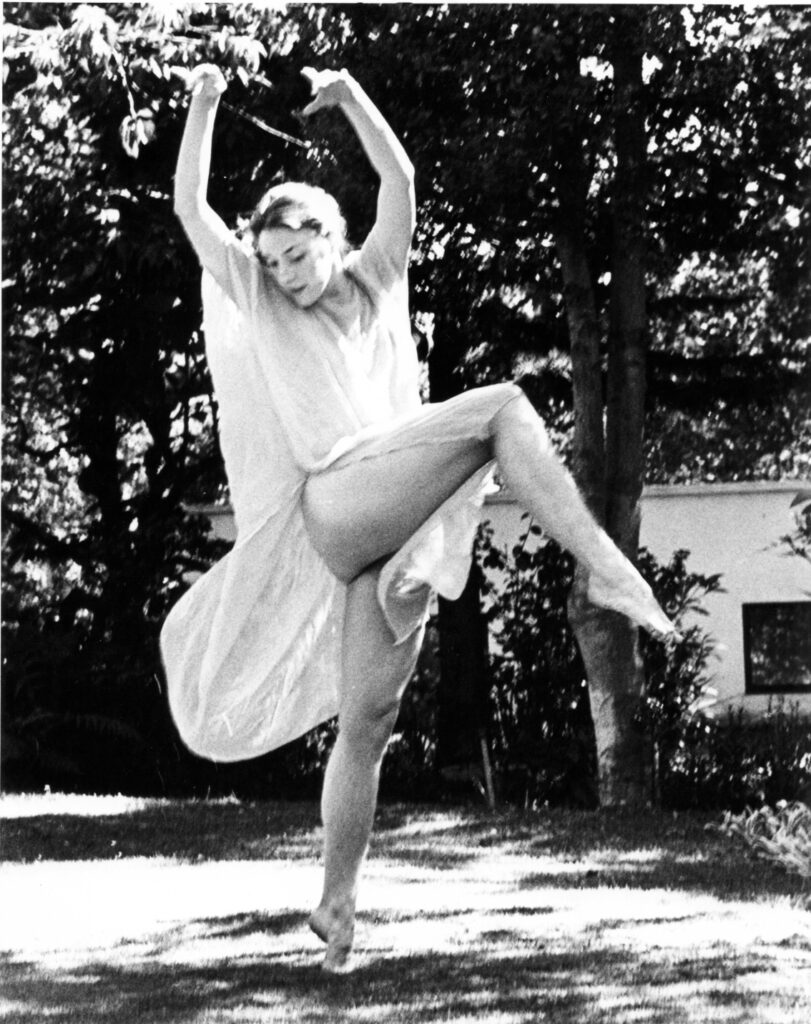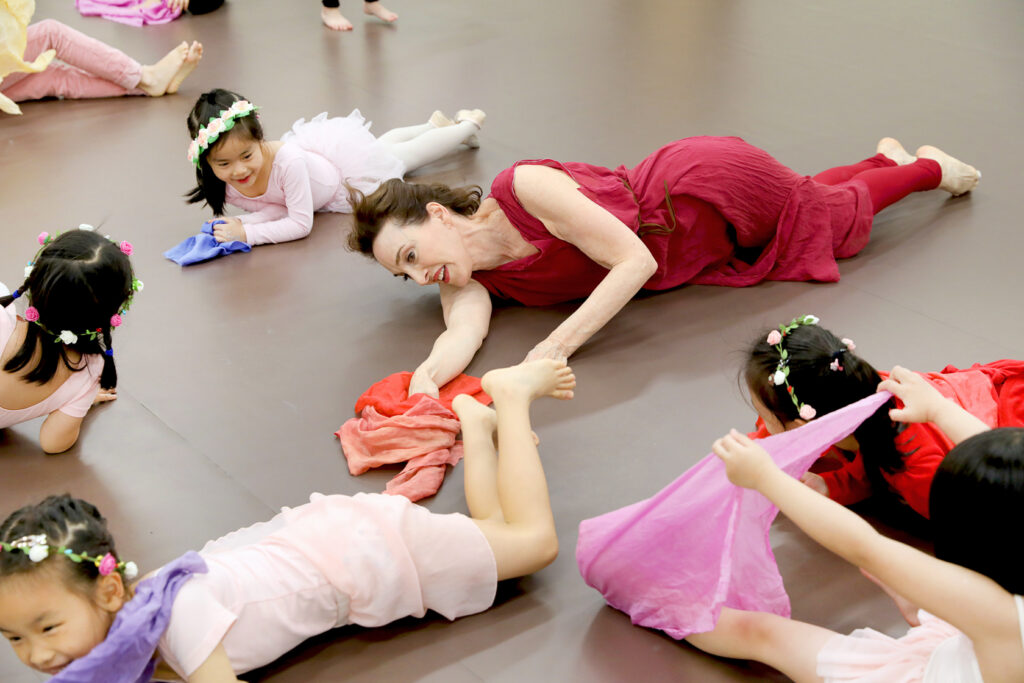2025 Dance Teacher Award Honoree Lori Belilove Uses Isadora Duncan’s Legacy to Engage Students’ Artistic Imaginations
“I love mistakes and confusion before we get to clarity and precision,” says dancer, choreographer, and dance teacher Lori Belilove. For her, the point of teaching dance is to “tap into the student’s artistic imagination.”
Belilove is a direct heir of Isadora Duncan, whose students were Belilove’s teachers. Since 1989, she has been artistic director of the Isadora Duncan Dance Company (IDDC), the New York City–based resident performing troupe of the Isadora Duncan Dance Foundation. Teaching and dancing are one and the same to Belilove. “I teach as an artist,” she says. “I’m a little bit like Isadora in that way.”
Like Duncan, Belilove’s teaching is both emotionally liberating and technically exacting. “No one has ever left my class thinking that this is a froufrou dance style!” she says. “I try to create an environment of hard investigation into the nuances of a movement, combined with big, joyful aerobic chest movements, skips, and runs.”
She goes on: “Duncan style looks simple, but the technique is mostly hidden within the body in a subtle way. What is happening is this underpinning of breath, actually a kind of breath control, which translates into a look of freedom and spontaneity.”

A self-described tomboy, Belilove grew up in Berkeley, California, playing basketball and learning gymnastics. At age 12, she took a road trip through Europe with her family. In Athens, they visited a former student of Isadora Duncan, Vassos Kanellos. “He told me the story of his life—how meeting Isadora as a young art student transformed him—and that story transformed me,” recalls Belilove. “When this wild-spirited kid was exposed to the vitality of Isadora’s dancing philosophy, she was smitten. It was the right place—Athens—to be introduced to Duncan, at the formative age of 12—mature enough, yet fresh, too.”

Belilove returned to Berkeley inspired. She enrolled in ballet classes, but she didn’t like the “soulless way in which it was taught. Meanwhile, she scoured the Berkeley public library for everything she could learn about Isadora. “It was like I’d found a soul sister,” she says. Still in her teens, she returned to Athens to study with Kanellos.
After two and a half years in Greece, Belilove returned to California with the opportunity, at 19, to study with Irma Duncan, one of the original performing “Isadorables.” Irma laid the foundation for Belilove’s Duncan technique: “She said, ‘Don’t piddle around, get that chest lifted up, extend the arms, expand what you’re doing,’ ” Belilove says. “I remember watching her thrust her pelvis forward on a diagonal movement, so the spine arched way back, a fuller movement than I’d ever seen any teacher do. It gave me license to use the fullness of my body.”
Belilove moved to New York City in 1976 to study with “Isadorable” Anna Duncan and next-generation Duncan authorities Hortense Kooluris and Julia Levien. She also trained there in Zena Rommett floor-barre, taught by Pamela Pribisco, and Gyrotonics with Hilary Cartwright and Julio Horvath. Pribisco became her performance coach for the next 25 years, using her ballet knowledge to help Belilove refine her technique for the stage. Belilove describes her as being like a theatrical director, a “second pair of eyes” on each dancing gesture.
As an educator, Belilove passes all of these influences down to her students. In class, her priority is individual attention. She treats each dancer as an artist regardless of skill level, guiding them to project their artistry, and setting an example with her own intensity of purpose.
Belilove begins a typical class with breathwork, skips, and runs, delighting in Duncan movement. She teaches with imagery: sways and swings move the body like branches in a storm. Sweeping arms clear heavy clouds from the sky.
She guides dancers to their center in the lift of the solar plexus, not the stiffening length of the spine. In Belilove’s class, counterbalance rather than verticality is the norm. The arms and hands, rather than forming classical shapes, reach out to connect self with others, or surrender to the earth or reach to the sky.
“She got inside [Duncan technique] and analyzed how to make it concert dance, down to the last detail,” says IDDC dancer Sam Humphreys, who first encountered Belilove when he was a teenager in Asheville, North Carolina. While training as a musician, he was swept away by “this wild, tunic-wearing woman, dancing to Beethoven and Gluck and the composers I loved.” At 17, he moved to New York City to study with Belilove, and sees her as “a shining example of what it means to be a performer.”
Beth Disharoon Wright was a burnt-out Juilliard graduate when she auditioned for Belilove in 200l. “[Working with Lori] reminded me of why we dance,” she says. “She leads with the heart.” After dancing with Belilove for 17 years, Wright now chairs the dance department at the South Carolina Governor’s School for Arts and Humanities.
IDDC associate artistic director Emily D’Angelo has been dancing with Belilove for 16 years, and refers to the company as “home,” a place where each individual is appreciated for their unique shape, energy, and imagination. “It takes a while to understand what Lori’s doing,” says D’Angelo, “because she will give two dancers completely opposite directions for the same movement. Each solo is coached differently for each dancer.” This allows each dancer to find the essence of the movement in their own way.

A teacher-artist herself, D’Angelo says her teaching style was transformed by watching Belilove, especially in her work with children. “It lights me up to work with them,” Belilove says. “The trick is to avoid trying to over-control the classroom, and let the playfulness in.” Belilove’s classes often end with students in a circle, tossing a feather-light scarf from hand to hand around the ring.
Belilove has no regrets about devoting her life to Duncan’s legacy: “If I ever questioned the pursuit of Duncan dancing, it was short-lived. I would return, often after exploring other trainings, to incorporate the work back into Duncan,” she says. “Isadora’s work feeds me, my body, mind, and soul, and I feel it’s my destiny to keep it pure and alive.”
To read about the other 2025 DT awardees, click here!
The post 2025 Dance Teacher Award Honoree Lori Belilove Uses Isadora Duncan’s Legacy to Engage Students’ Artistic Imaginations appeared first on Dance Teacher.